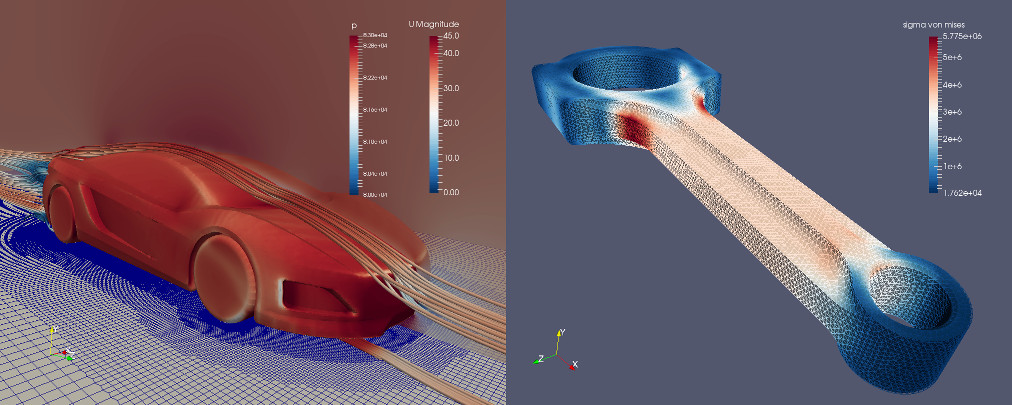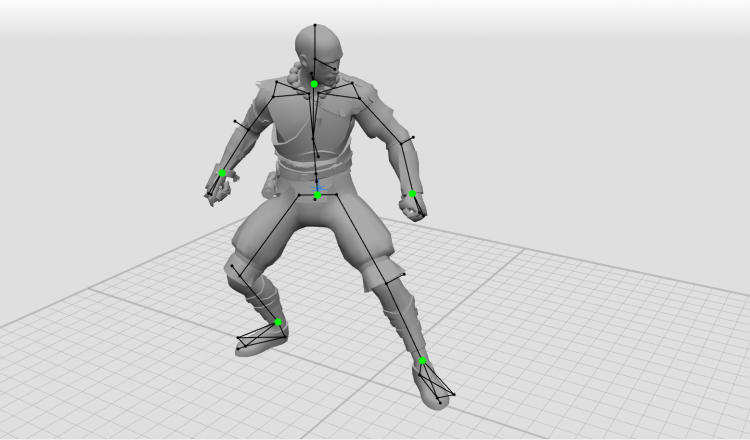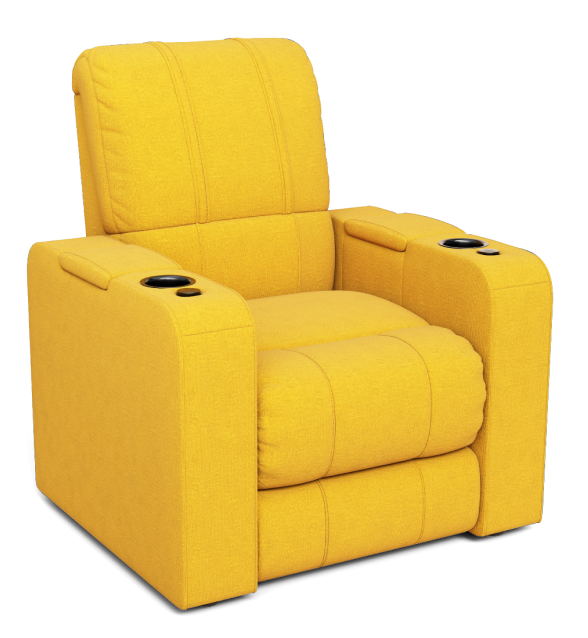Choosing between FBX and glTF, two industry-standard file formats for 3D models, requires a strategic decision-making process that aligns with your workflow’s specific needs. FBX boasts unmatched compatibility with leading game engines like Unity and Unreal Engine, as well as 3D tools like Maya and 3DS Max, making it the go-to choice for seamless data transfer in advanced 3D workflows. Meanwhile, glTF is engineered for unparalleled efficiency in transmitting 3D scene data over the internet. This positions it as the ideal solution for cutting-edge applications like remote viewing in augmented reality. Make an informed choice and elevate your 3D visualization game with FBX or glTF.

POST-PROCESSING COLOR MAPS
Autodesk FBX: A Technical Overview of the Popular 3D Data Interchange Format
The FBX file format, created by Autodesk, is a trailblazing, widely-utilized 3D data interchange solution that revolutionizes the way 3D editors and game engines communicate. Conceived by Kaydara’s Filmbox motion capture tool, where it was devised as the standard file format. In 2005, the release of its public SDK marked a pivotal moment in the 3D industry, with a determined effort to popularize FBX as the go-to standard for premium quality 3D data exchange across diverse tools.
Advantages:
Separate Position, UV, and Normal Topologies:
The FBX file format, in tandem with the OBJ format, boasts a highly advanced ability to preserve position, UV, and normal data with varying topologies, elevating it to the level of the most sophisticated 3D modeling tools. This remarkable capability enables seamless implementation of intricate features such as precise subdivision surfaces. Despite the demanding processing requirements for game engine compatibility, the FBX file format remains the premier choice for users who demand the utmost in 3D data interoperability and quality.
The Power of FBX SDK: Simplifying the Import and Export of FBX Files
The FBX SDK is the ultimate solution for developers seeking a seamless and effortless experience when working with the FBX file format. Its integration through the linking of the SDK and API for data streaming streamlines the process of importing and exporting FBX files, eliminating the need for software developers to understand the complexities of the file format. Unlike written standards such as glTF and COLLADA, the FBX SDK offers a unified and official platform, eliminating the risk of incorrect implementation by multiple teams. With the FBX SDK, developers can rest assured that they have a robust and reliable tool to take their projects to the next level.
Unmatched Interoperability
The FBX SDK delivers seamless compatibility, ensuring that all previous versions of the FBX file format are easily readable by the most advanced tools. It offers a transparent transition to new formats, eliminating compatibility headaches seen in other complex formats like COLLADA. FBX’s support for a wide range of features, including models, scene hierarchy, materials, lighting, animations, bones, skinning, blend shapes, and even legacy data types like NURBS surfaces and curves, provides users with complete confidence in their ability to accurately represent and transfer 3D data.
Endless Possibilities
The FBX file format presents a vast and versatile feature set, encompassing every aspect of 3D data. With its rich history and unparalleled compatibility, FBX empowers developers to transfer their creations with ease, unlocking endless possibilities for 3D content creation and collaboration.
High Performance & Efficiency
Utilizing a binary format, the FBX file format offers exceptional performance and efficiency in comparison to text-based formats. Binary data is written and read faster and take up less space than human-readable text representations. While binary formats can pose difficulties for direct reading and writing, the FBX SDK abstracts these complexities from the end user.
Prohibitive Accessibility
FBX is a proprietary format, and accessed through the official SDKs provided by Autodesk. Direct access to FBX files is restricted. It is not possible to access the data stored in FBX on systems not supported by the SDK (e.g. web browser or open source applications). Though Blender has managed to reverse engineer most of the FBX format after years of effort, it remains a closed format.
Complex Legacy Features
FBX supports a wide range of data types, including legacy features, such as NURBS surfaces and curves. The support for these legacy features comes at the cost of added complexity to the FBX format and its SDK, making it hard and costly to maintain. Integrating the SDK into size-restricted applications, such as mobile games, can also be challenging due to its large size.
Outdated Material Representation
FBX utilizes an outdated lighting model that is based on the Blinn-Phong spec-glossy model, with a single color or texture per material property. This lighting model is limited compared to the Physically-Based Rendering (PBR) material model and complex shader networks used in modern 3D editors and game engines. FBX materials do not support sub-surface scattering, layered materials, or anisotropic effects.
Legacy Lighting
The lighting model in FBX again uses 1990s-era conventions. Modern games use a physically-based lighting model, where all lighting parameters are grounded in physical quantities such as lumens, luminosity and physically-based fall-off. Modern game engines want to transfer global illumination information such as light probes and image-based lighting, but FBX does not support this. FBX uses a more historic and arbitrary lighting model, which makes it difficult to communicate between tools that use the more modern and physically-based approaches. Like with materials, most lighting information transferred using the FBX file format has to be fixed or simply redone once it is imported into its target application.
What is the glTF Format?
The glTF Format, or Graphics Language Transmission Format, is an open-source 3D model and scene format that provides an efficient method for transmitting rich scene 3D data. The format has been under the management of The Khronos Group since 2013.
Advantages:
Ease of Access
Developers can access glTF files using open-source libraries or write their own importer. The glTF format utilizes a JSON descriptor file to outline the properties and contents of the glTF. This format is effortless to read and write as it uses JSON, a flexible human-readable file format standard, which has parsers readily accessible in most programming languages.
Optimal Performance
Similar to the FBX file format, the glTF stores the bulk of the 3D geometry data in a binary file, and the JSON descriptor file guides its reading. This results in glTF being, on average, 5x smaller and over 10x faster to read compared to file formats that store 3D geometry data in human-readable text (such as OBJ).
Efficient Integration with Game Engines
For game engine purposes, glTF is even more efficient to read than FBX as it stores its mesh data in a unified topology. This allows the game engine to directly read glTF data into GPU memory, thereby eliminating the need for intermediate processing, unlike OBJ mesh data.
Guidance from Standardizing Body
The involvement of a standardizing body in file format specifications brings several advantages, mitigating the often perceived disadvantages of such bureaucracies. These bodies guarantee that the file format remains current with technology advancements, fostering agreement among vendors on implementation details to guarantee interoperability. Khronos is a standardizing body that aids the growth and adoption of glTF.
Comprehensive Scene Representation
glTF files are capable of storing not only models and materials, but also animation data, bones, skinning, scene hierarchy, and lights (via an extension). Thus, glTF can accommodate both individual static models (like OBJ), and animated characters and complex scenes, akin to FBX files.
Augmented Reality Applications
glTF is the standard for data transmission in web-based and app-based augmented reality applications, employed by giants like Google and Facebook. This is owing to its efficiency, fast data processing, and direct readability by game engines, being a ratified standard, which enables vendors globally to support output in this format.

Character Creation
Limitations of glTF Format
Lack of Editability in 3D Model Representation
One of the significant drawbacks of glTF compared to FBX is the limited representation of 3D model data. The storage format is simple and does not allow for variations in topology for position, UV, and normal data. This may be a benefit when it comes to direct reads into a game engine, but it hinders the ease of modifying the 3D model. Hence, glTF is for publishing 3D models for viewing and not for high-fidelity 3D modeling storage. If you aim to store 3D assets for editing, it’s advisable to use alternative file formats.
Inadequacy in Shader Network Support
The material definition in glTF is more advanced than that of FBX, but it still lacks complexity compared to modern 3D tools such as Maya, Clara.io, and Unreal Engine. The current state-of-the-art in representing materials is via shader networks, which glTF doesn’t support. Hence, it’s not an optimal file format for editing materials and should only be considered for publishing 3D models for viewing.
Non-Compliant Extension Implications
The glTF standard provides for vendor-specific extensions. These extensions do not assure backwards compatibility with glTF readers or viewers that do not endorse these vendor-specific modifications. This implies that every time these non-compliant extensions are adopted by a singular vendor, the file format becomes fragmented. As an increasing number of vendor-specific extensions emerge, users will experience challenges in ensuring glTF compatibility across diverse vendor tools. Unlike the FBX file format, this kind of fragmentation is not prevalent.
Maximizing 3D Model Potential: Choosing the Right Format for Your Needs
For complex scenes, animation, lights and optimized distribution of 3D models for game engine or viewer utilization, glTF is the ideal choice. If you require storage and retrieval of editable 3D models and scenes, FBX is the better option. It guarantees compatibility between tools, at least for its supported features, and its data representation is more precise compared to glTF.
Unleash the Power of 3D Product Visualization with Tulfa
Tulfa is a cutting-edge solution provider for eCommerce businesses seeking to enhance their product presentation on website with photorealistic imagery, interactive 3D models, and augmented reality experiences. Our innovative 3D photography, 3D modelling and augmented reality services enables businesses to elevate their product offerings, driving sales and improving customer engagement.
By leveraging on the latest advancements in computer graphics and rendering technologies, we deliver photorealistic depictions of products that are indistinguishable from real-life counterparts. Our software also supports the integration of animation, lighting, and advanced materials, providing an ultra-realistic experience for users. Our intuitive interface makes it simple for users to create and share these interactive experiences, even without specialized knowledge or training.
If you’re seeking a competitive edge in the eCommerce landscape, schedule a demo with our team to see how Tulfa can help bring your vision to life. Contact us at: hello@tulfa.com



